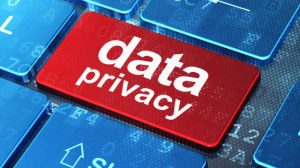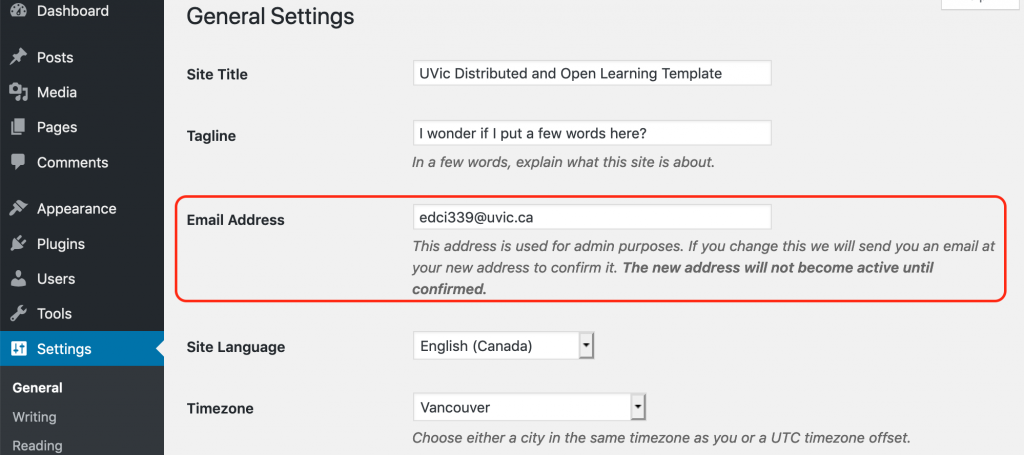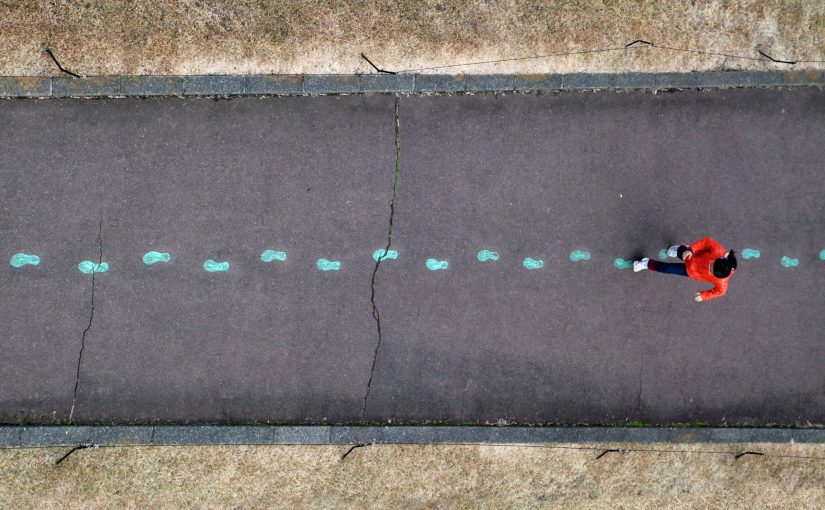I shared my first draft with my learning pod a few days ago, the feedback I received is very useful. I should put more my own opinions in my draft and do a better job at polish my final paper. I am very thankful for the feedback.
Category: Distributed & Open Learning
First Draft

Draft
Data privacy: the impactful conflicts between Data and Privacy
With today’s advanced technology, user data collection and analyze has become a huge factor in marketing. Companies are using data to target their potential customers, using data to design their advertisement, and using data to improve their products. It is fair to say that data has become the most important resource in the economy. On the opposite side of collecting and analyzing data, there is privacy. It is obvious that the old version of privacy laws is not suitable for today’s technology, more and more countries and organizations have made some changes to their privacy laws or making new laws. The collection of data and the protection of privacy is one of the most impactful conflicts in this era, and this conflict is pushing the competition of marketing on to next level. How does the conflict between data and privacy affect marketing and people’s daily life and how to protect your privacy better in this era are the two questions people should pay attention to. In this post, I will be reviewing several articles and trying to find out the answer to those two questions. Hopefully, by the end of this post, we will have a new perspective on data privacy and learn how to protect our privacy better.
The first article is by Kelly D. Martin and Patrick E. Murphy in 2016, the authors state a lot of facts and data in their research article “The role of data privacy in marketing”. The first part of the article is about the impact of data and analytics to marketing. The authors point out their main theme of the article in the first part: “Our research motivation derives from observations that generally show that marketing practice using consumer data and analytics has advanced at a more rapid pace than has marketing academic scholarship. Specifically, we argue that in reality, the meaningful questions have shifted from whether consumers are willing to disclose their private information to how consumers react now that their private information is widely accessible and available to a host of marketers and other interested parties. (Martin & Murphy, 2016)”. According to Martin and Murphy, they think people’s opinion and understanding of the word “privacy” has changed, people now are more concerned about what other people will do to their personal information than leaking their personal information. The author addressed their core questions of the article at the end of the introduction, how does privacy’s concept change over the years, how to develop a new way to understand privacy in marketing, and they provide some suggestions for future research (Martin & Murphy, 2016). In the main body of the article, the authors spend a lot of time explaining and defining the different concept of privacy in the modern age. In addition, the authors use a lot of tables and charts to help readers understand the concept better. After listing and explaining the concept and impact of data privacy in marketing, Martin and Murphy conclude their article by stating their findings. Although the concept of privacy has changed, “By synthesizing privacy across these areas, we advocate for a holistic way of thinking about organizational use of consumer data, and how this fit into a bigger societal picture. (Martin & Murphy, 2016)”.
The second article by Jim Isaak and Mina J. Hanna talked about why people should be worried about their private information. The article is about Facebook gave users’ personally identifiable information to a data firm named Cambridge Analytica, and how this story concerns people. The authors point out that “It is clear that national governance institutions demonstrably lack the ability to anticipate technology’s future impact on the rights and duties of its citizens, much less its impact on the structure of society, ideological divides, and political schisms among its citizens and the expansion of identity politics promoted by isolated social and news media echo chambers. (Isaak & Hanna, 2018)”. In addition, this incident also causes a huge debate about technology’s impact and the risks for people’s privacy. The authors first explain some of the backgrounds about personal data online and Cambridge Analytica, and they point out that Facebook is a resource for personal data, but it is not the only one. With today’s technology, it is very easy to find out about a person’s personal information, and people must pay attention to their privacy online. Public Transparency, Disclosure for Users, Control, and Notification are the four principles the authors think are the most important (Isaak & Hanna, 2018). In other words, people should know what type of data has been collecting and why people should know if their data is being collected, people should have control over the collection of their data, and people should know why and where their data will be used. At last, the authors list some of the regulation that has been used or has been purposed regarding personal data online. Comparing to the first article, this article focused more on regulating the collection of personal data and what people should do to protect themselves. In addition, this article is more realistic about the problems caused by advanced internet technologies and point out that people should be able to protect their privacy.
The third article is a study done by Kelly D. Martin, Abhishek Borah, and Robert W. Palmatier in 2017. Unlike the previous two articles, this article does not spend a lot of time explaining what data privacy is, instead, does a mathematical study on how data privacy affect the economy. First, the author points out the effect of data privacy can go two different directions, positive effects, and negative effects. In detail, the authors named the Gossip Theory as to why there will be a negative effect when collecting customer’s data. Gossip theory states: “Customers’ psychological and behavioral responses to feelings of vulnerability can be informed by gossip theory, considering the common notion of unsanctioned transmissions of personal information about a vulnerable third party. (Martin, Borah, and Plamatier, 2017)”. After briefly explaining the concept of their study, the authors go ahead and list all the model and formulas they will be using. To make sure the result will be accurate, they designed three different real cases to study, and post all their data in the article. In the result section, the author said that the outcome of the three cases is very different. In case one and two, which the companies do not provide control and transparency of data to their customers, the negative effects of collecting customers’ personal data outweigh the positive effects. On the other hand, in the third case, where companies offered control and transparency of data, the companies are benefitting by collecting customers’ data (Martin, Borah, and Plamatier, 2017). It is obvious that people nowadays have a sense of protecting their privacy, and it is very important that the firms respect that and let people know why their data is being collected and what will it be used for. At the end of the article, the authors state that their result is based on a short time period, and they encourage future research to study the effect of privacy data in a longer time period.
All three articles are very specific and have different angles regarding the issue of privacy data. The first article points out the concept of privacy is different from what it used to be. The second article discusses a true case where data and privacy are in conflict and lists some ways to protect people’s privacy. The third article is trying to solve the effects of data privacy to the economy on the mathematical level. With the light of there articles, my questions, in the beginning, have been answered. Data privacy have both positive and negative effects on the economy. In addition, people already have a sense of protecting their privacy, however, people should learn to protect their data better on the internet. In my opinion, it is important that people know why and where their data will be collected, and people should know what their data will be used for. Just like the previous post I did on Turnitin, companies and firms should do a better job at transparency and customers should do a better job at knowing what the companies’ policy is.
In conclusion, with today’s technology, people should be more careful about their private information. The collection of customers’ personal data should be transparent, and the customer should be informed if their data will be collected. Advanced technology allows us to do things beyond our imagination, however, it also causes a lot of new problems. It is important that laws and regulations follow up with the newest technology.
References:
- Isaak, J., & Hanna, M. J. (2018). User data privacy: Facebook, cambridge analytica, and privacy protection. Computer, 51(8), 56-59. doi:10.1109/MC.2018.3191268
- Martin, K. D., & Murphy, P. E. (2017). The role of data privacy in marketing. Journal of the Academy of Marketing Science, 45(2), 135-155. doi:10.1007/s11747-016-0495-4
- Martin, K. D., Borah, A., & Palmatier, R. W. (2017). Data privacy: Effects on customer and firm performance. Journal of Marketing, 81(1), 36-58. doi:10.1509/jm.15.0497
Picture:
10 Tips to Protect Your Business and Customers on Data Privacy Day By Daryl Nerl
Retrieved from https://smallbiztrends.com/2017/01/data-protection-tips-for-data-privacy-day-2017.html
Data Privacy and Copyright

Nowadays, universities or other educational facilities all around are still facing the same problem regarding student’s writing: plagiarism. Copyright should be protected because it is the most important thing about people’s work. However, the papers produced in one university in a semester are hard to count, and it is almost impossible for schools to check them manually. As a result, plagiarism detecting software is born. Software and websites that provide detecting service are commonly used in universities, and the writings go through those programs are countless. It seems like those programs solve the plagiarism problem for educational facilities, but how about the cost? With the development of internet technology, people are more worry about their privacy than ever. Here are some of my thoughts as a current university student about using online plagiarism detection programs.
As a university student, I have a lot of experiences with online learning tools and educational tools. I feel fine with all these useful tools and I do not realize the problems it caused until I read A GUIDE FOR RESISTING EDTECH: THE CASE AGAINST TURNITIN by Sean Michael Morris and Jesse Stommel. As an international student, I took a language program when I first came to Canada, which involves a lot of writing. Instructors will always tell us student to watch out for plagiarism and our work will be tested through Turnitin. During my four years in university, I have lost count how many papers I submitted have been run through Turnitin, that is why I am shocked when I read the article. Until now, the idea of I loses my full right to my work whenever my work runs through the software did not pop up in my head. One of the main reason is that I never personally visit the website of Turnitin and read their terms of use. However, I understand why Turnitin is very popular in university. It is a huge amount of work to prevent and detect plagiarism with the huge amount of papers produced in a university, and Turnitin is the easy way out. In addition, the reason why most of the student and educators did not realize the problem is most of the paper is not important enough to create a copyright crisis. Just like the authors state in the article:”In a recent conversation where he tried to explain why Turnitin’s violation of student intellectual property was a problem, Sean’s argument was countered with a question about whether that intellectual property was worth protecting………. the point to make here is that Turnitin actively profits (to the tune of $752 million) from the work of students(Morris & Stommel, 2018).”, most of the time, students have no idea someone else is profiting by using their work. Furthermore, the Terms of Use section of an app is always very long and detailed, long enough that most people just skip to the end and click “I agree”. Actually, all the details about the app are written in that section. Students are usually informed that their work will be run through software like Turnitin, but they also usually have no idea of what it really means. Most of the students, like me, are just “used to” this kind of things, they never really find out what software like Turnitin does to their copyright. As the case in “A GUIDE FOR…..”, people can not legally blame or accuse Turnitin of anything just because they did not read the terms of use very carefully. I personally have encountered similar problems in a gaming app. For new games, it is almost guaranteed there are some loopholes or so-called “BUGs” in coding, and some people will take advantage of them and claim “It is the gaming companies problem they have BUGs.”. After they are banned, they will argue how they got punished because of someone else’s mistake. In fact, using a loophole instead of reporting it is definitely in most if not every gaming app’s terms of use.
In conclusion, Morris and Stommel’s article is very interesting and got me thinking about protecting my privacy on the internet. I think it is very important to read about the terms of use section of an online tool or app before using it. In addition, educators should inform students if they decided to use software like Turnitin to test student’s work for plagiarism. The students should have full power over their work and know the consequences of using those kinds of software. There are a huge variety of tools can be used online, and it is not too late to change the tool if you are not comfortable with what you read in terms of use.
Original Post:
References:
A GUIDE FOR RESISTING EDTECH: THE CASE AGAINST TURNITIN, Sean Michael Morris & Jesse Stommel, An Urgency of Teachers, (2018). Retrieved from https://criticaldigitalpedagogy.pressbooks.com/chapter/a-guide-for-resisting-edtech-the-case-against-turnitin/
Photo by Glenn Carstens-Peters on Unsplash. Retrieved from https://unsplash.com/photos/npxXWgQ33ZQ
Open Pedagogical Post

As an international student, I am deeply connected with the reading about open pedagogy and textbook. We pay a lot more tuition than local students and we still found textbooks way too expensive, it is not hard to realize how the price of textbooks affect local students. Although the price of a textbook contains a lot of costs other than papers. it is still a very hard decision to buy a textbook or not. In my experience, most of the courses do not use all the contents in a textbook. In addition, the frequent change of professors and course materials sink the price of second-hand textbooks. In my first year, I brought a math textbook which cost me around 400 CAD. After I used it for two semesters, the book required for the math courses I took changed, and the book is still in my house somewhere. On the other hand, most of the courses I take nowadays do not require textbooks. A lot of instructors and professors start to use materials that can be accessed online, some of them are free. Although some of the materials like assignments or practice tools still need to be purchased, they are much cheaper than a textbook. For students like me, open pedagogy can really benefit us a lot. Not only because of the price, but the degree of freedom comes with it. Students have different learning and studying habits, and open pedagogy allows students to study the way they want rather than following paths on a textbook. Just like Jesse Stommel said in the article, open pedagogy is not only about how to teach, it is about how student learn. The high price of textbooks is really hurting students, and open pedagogy might be the solution.
From a student’s perspective, I enjoy my time when I am taking online courses because I get to choose the study plan and study time on my own, and the same thing can be said about open pedagogy. Society has changed a lot and maybe it is time for some changes in education and textbook business as well.
References:
Photo by Samuel Zeller on Unsplash retrieved from https://unsplash.com/photos/UG3INgQeZPw
TEXTBOOKS, OER, AND THE NEED FOR OPEN PEDAGOGY by Jesse Stommel on AN URGENCY OF TEACHERS retrieved from https://criticaldigitalpedagogy.pressbooks.com/chapter/textbooks-oer-and-the-need-for-open-pedagogy/
Blog Post Three

With the development of internet technology, social media has become a huge part of people’s daily life. It seems like everything is better if they are tied to social media; for example; advertising, learning, marketing, researching, and more. It is obvious that people nowadays check social media more often than any other forms of media. It allows people to communicate and connect with others all around the world, and learn from other people’s experience.
Learning via social media is interesting. With the unlimited resources from the internet and a huge amount of people to talk, learning can much easier. On social media, people with the same interests or goals usually will form some online communities. Those communities are usually an open community, which means people can join and leave freely and they can choose to talk and share or watch and learn from other’s discussion. As Major (2015) states in her book TEACHING ONLINE, there are five types of people in a learning community based on how they participate: Peripheral, Inbound, Insider, Boundary, and Outbound. These categories usually reflex how long people have been participating in that community. In my experience, I found this theory very true. Unlike other learning groups where learners start at the same time, learning communities on social media are much more flexible. Due to the variety of choices and quality of the learning communities, people are always joining or leaving. In my opinion, it is one of the greatest advantages of an online learning community. If you are not interested in what people are talking about or the group does not fit you, you can always find another group of people to join and learn. Just like Major (2015) suggests, people’s journey in an online learning community is a cycle. First, they join and listen to other people’s conversations. Then, they become more and more participating inside the group until there is nothing left to learn or they lose their interest. After that, they participate less and less. At last, they leave the community and join a new one. With all being said, I think that social media is a great way of learning and the process of connecting with a learning community is very interesting.
Reference:
Claire Howell Major. (2015). Teaching Online – A Guide to Theory, Research, and Practice. Retrieved from http://ebookcentral.proquest.com/lib/uvic/detail.action?docID=3318874 (pp. 227-229, ‘Networks and Sets’.)
Picture by Rahul Chakraborty, retrieved from https://unsplash.com/photos/xsGxhtAsfSA
Blog post two
As a university student, I have a lot of experiences with online learning tools and educational tools. I feel fine with all these useful tools and I do not realize problems until I read the article assigned. As an international student, I took a language program when I first came to Canada, which involved a lot of writing. Instructors will always tell us student to watch out for plagiarism and our work will be tested through Turnitin. During my four years in university, I have lost count how many papers I submitted have been run through Turnitin, that is why I am shocked when I read the article “A GUIDE FOR RESISTING EDTECH: THE CASE AGAINST TURNITIN”. Until now, the idea of I loses my full right to my work whenever my work runs through the software did not pop up in my head. However, I understand why Turnitin is very popular in university. It is a huge amount of work to prevent and detect plagiarism with the huge amount of papers produced in a university, and Turnitin is the easy way out. In addition, the reason why most of the student and educators did not realize the problem is most of the paper is not important enough to create a copyright crisis. Furthermore, the Terms of Use section of an app is always very long and detailed, long enough that most people just skip to the end and click “I agree”. Actually, all the details about the app are written in that section. As the case in “A GUIDE FOR…..”, people can not legally blame or accuse Turnitin of anything just because they did not read the terms of use very carefully. I personally have encountered similar problems in a gaming app. For new games, it is almost guaranteed there are some loopholes or so-called “BUGs” in coding, and some people will take advantage of them and claim “It is the gaming companies problem they have BUGs.”. After they are banned, they will argue how they got punished because of someone else’s mistake. In fact, using a loophole instead of reporting it is definitely in most if not every gaming app’s terms of use.
In conclusion, today’s reading is very interesting and got me thinking about protecting privacy on the internet. I think it is very important to read about the terms of use section of an online tool or app before using it. There are a huge variety of tools can be used online, and it is not too late to change the tool if you are not comfortable with what you read in terms of use.
Bolg post one
According to Major’s article, there are five major different modalities of online learning, enrollment, amount, timing, platform, and pathway. Most online courses are constructed with these five components, for example, the most common online learning tool used in universities is Moodle. Moodle is a platform that allows students to access it under some restriction., and it allows students to send messages to peer or teachers. It is very commonly used because it supports a variety of modalities. It is suitable for both open and closed enrollment as long as people can log into the system. In addition, it is also used for blended courses and fully online courses. Timing is not a time for Moodle either, it depends on the instructor’s settings. However, the pathway of Moodle is usually centralized, people usually follow a prescribed path to finish the course. Overall, Moodle is a very usefully tool for online learning, especially for university students, but it also has a lot of limits.
TED-ED is one online learning tool I personally used for several times. It is a website allows people to post short videos or animations to create short lessons. People can access it anytime they want and can choose what they want to learn. It is open enrollment so people can always access it if they know the website. In addition, it also allows creators to put other elements into their lessons, such as pop-quizzes and links for extra information. It is very interactive as an online learning tool and has a decentralized pathway. Extra information, notes, and explanations can be installed inside the short video and it is very easier to access for students who are confused. In addition, there are also commenting area that allows people to discuss or contact the creator of the video. In my experience, I think TED-ED is a great open enrollment learning tool, it is very easy to access and contains a huge amount of information.
Welcome and Introduction
Before you get started, please send your instructor an email with the URL to your site, which will be [yoururl].opened.ca. This step is critical as your work will be completed on your blog and I need to know where to find you.
First tasks you should explore with your new blog:
- Go into its admin panel by adding /wp-admin at the end of your blog’s URL.
- Tap “Settings” and change the email address to your email address, then make sure you check your email and confirm the change.

- Add new categories or tags to organize your blog posts – found under “Posts” (but do not remove the pre-existing “edtechuvic” or “Distributed & Open” categories)
- See if your blog posts are appearing on the course website (you must have the course categories assigned to a post first and have provided your instructor with your blog URL)
- It can take an hour or so for your posts to appear on the course site.
- Add an “About Me” or a page welcoming visitors to your site.
- Embed images or set featured images and embed video in blog posts and pages (can be your own media or that found on the internet, but consider free or creative commons licensed works, like found at unsplash.com or pexels.com)
- Under Appearance:
- Select your preferred website theme and customize to your preferences (New title, etc.)
- Customize menus & navigation
- Use widgets to customize blog content and features
- Delete this starter post and the test posts.
Test Post
This is a test post that was created in the template you copied. Please delete it once you have confirmed that your posts are being aggregated on the course site.
